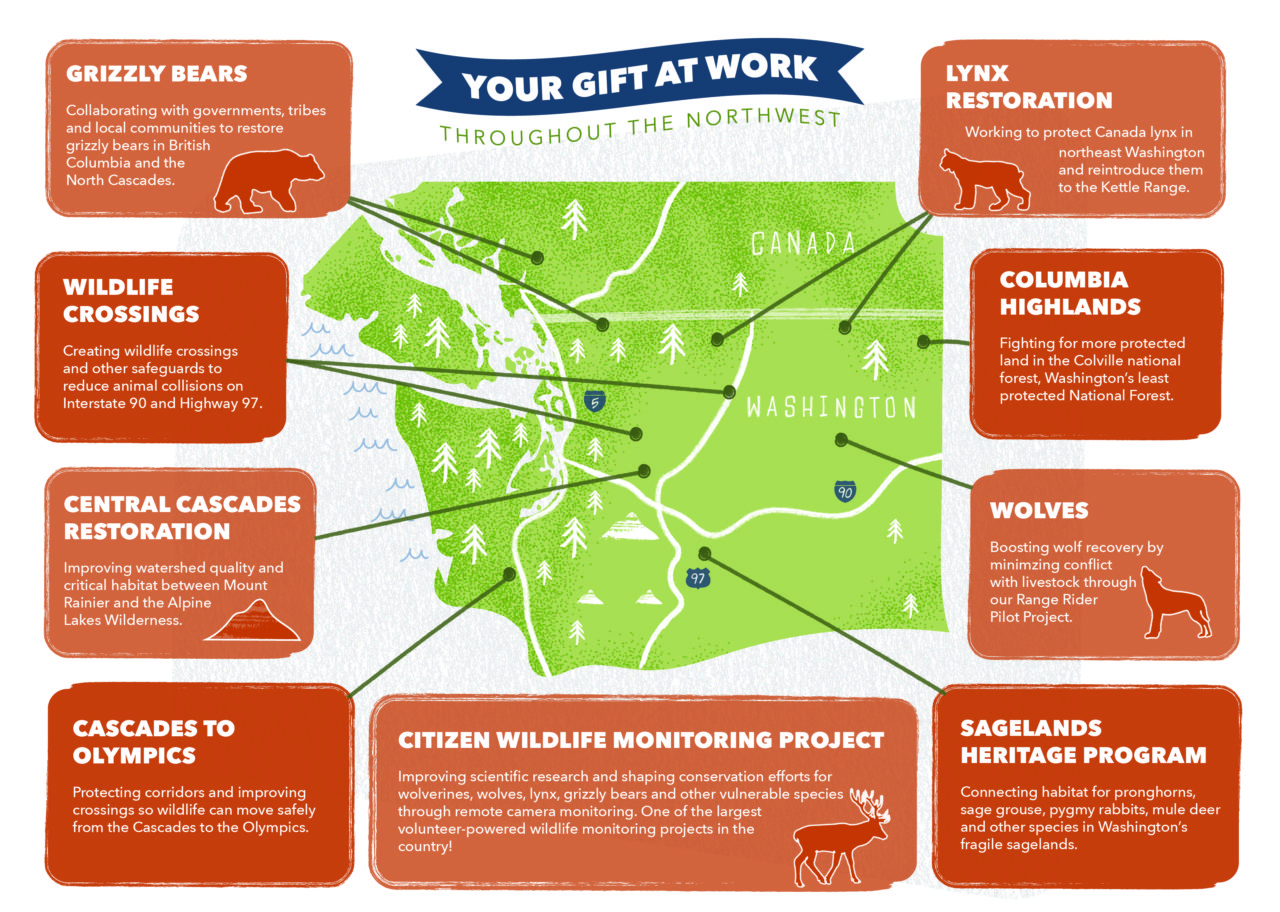OUR MISSION
We protect, connect and restore wildlands and wildlife from the Washington Coast to the British Columbia Rockies.
Founded in Bellingham, Washington in 1989, we’re your voice for conserving local wildlands and wildlife. Read about our organizational values, or our commitment to Justice, Equity, Diversity, and Inclusion.
With around 28 staff and half a dozen regular contractors, we work closely with several landscapes throughout Washington, British Columbia, and beyond. Our conservation community includes more than 4,000 supporters annually and more than eighteen thousand activists and online followers.
Bold, innovative, and effective, we’ve protected hundreds of thousands of acres of wildlands, supported the recovery of threatened species from wolves to fishers, and touched thousands of lives throughout the greater Northwest. Our successful campaigns and groundbreaking collaborations help define our effective approach to conservation. Elected leaders, government agencies, and conservationists know us for being science-based and tenacious, yet pragmatic.
Learn more about our programs protecting wildlands, connecting habitats, and restoring wildlife on the Our Work page. Scroll down for maps showing key conservation programs and staff around the region.
Recent Awards:
Washington Department of Fish and Game’s Organization of the Year 2023
National Wildlife Foundation’s Affiliate of the Year 2022
Wilburforce Foundation’s Conservation Leadership Award 2022
Annual Reports:
Conservation Northwest 2022 Annual Report
Conservation Northwest 2020-2021 Annual Report
¿Buscas información sobre nuestro trabajo en español? Haga clic aquí para nuestro one-pager!











